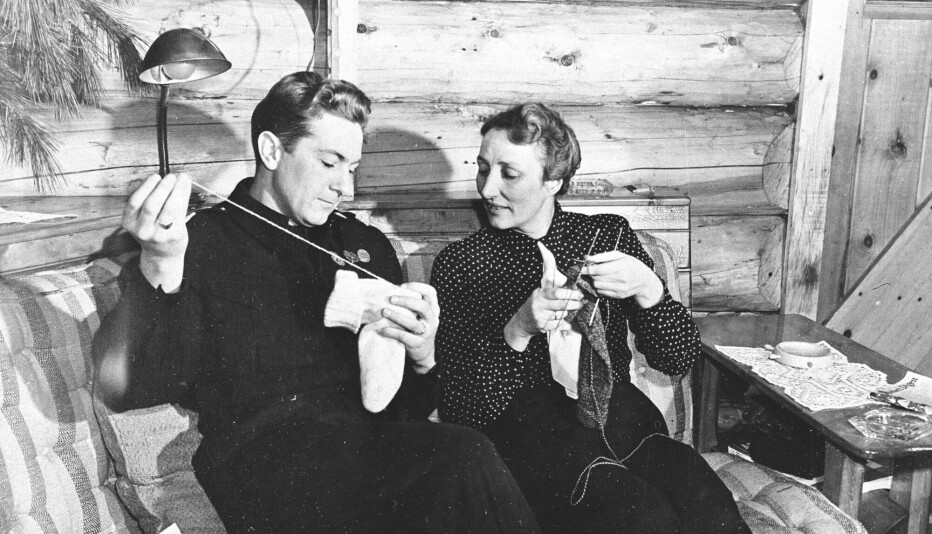
Norway ranked as the least happy country in the Nordics once again
Once again, Norway is ranked as the least happy country in the Nordics according to the UN's happiness report. Finland tops the list for the seventh consecutive year.
Denmark, Iceland, and Sweden follow in the three spots behind Finland. Norway is also beaten by Israel, where the survey was conducted after the Hamas attack and hostage-taking in October 2023.
The World Happiness Report is a report prepared in collaboration with the UN and is often referred to as the UN's annual happiness report. It measures how people in the different countries experience happiness and quality of life. New this time is that the report now also assesses quality of life in different phases. The report reveals large differences between generations. Especially young people have become less hopeful about the future.
About 1,000 people from each country participate in the survey each year and are asked to evaluate different aspects of quality of life. Subjective assessments of quality of life are important, according to the Norwegian Institute of Public Health (NIPH), among other things because it affects health, living habits, and future choices.
Most difficult for the youngest
“The Nordics are a haven of happiness for the elderly. All five Nordic countries are at the top among those over 60 years old,” senior researcher Ragnhild Bang Nes at NIPH, who has been researching happiness for several years, tells Norwegian Broadcasting Corporation NRK.
Norway would have emerged as the world's third happiest country if only people over 60 years old had participated in the survey.
However, focusing solely on individuals under 30 years old, Norway's rank would plummet to 20th.
“This age group is pessimistic about the future. There are many factors at play here, such as employment, financial stability, and housing,” Nes says.
Accustomed to having it good
Nevertheless, the Norwegian population is about as satisfied this year as last year and ranks high globally. However, even though there has been an increase in prosperity, the level of happiness has not followed suit.
According to NIPH, this discrepancy is primarily due to four factors:
- Adaptation – most people tend to get used to new and improved living conditions and raise their expectations in line with improvements.
- Diminishing marginal utility – the fifth piece of cake brings less increase in satisfaction than the first.
- Social comparison – most people tend to compare themselves to others, often those who are better off.
- Personality traits and genetics.
Happy under the previous prime minister
We have to go back to 2017 to find Norway as the world's happiest country. At that time, Erna Solberg (Conservative Party) was prime minister. She expressed pride to Norwegian News Agency NTB in leading the world’s happiest country, yet she also acknowledged that not everyone in Norway shared in this happiness.
“It’s difficult to measure happiness,” said Solberg and stated that learning to be content in life is an important key.
‘We have a solid foundation, but many individuals in our society are facing hardships. It's imperative that we improve our efforts to support them,’ she told NTB.
This year's report paints a picture of younger generations being happier than older generations in most of the world's countries, but not in Norway. And not at all in the USA.
Worse in the USA
Across Central and Eastern Europe, a general increase in happiness was observed among all age groups. Some countries, like Serbia and Bulgaria, have had a particularly positive development over the last decade and climbed over 60 places on the list. Meanwhile, the United States and Germany have experienced a drop in this year's happiness rankings, falling out of the top 20.
Last year saw the USA ranked 15th, but it has since slipped to 23rd place. This decline is largely attributed to Americans under 30 feeling less satisfied than in previous years.
If only Americans over 60 had responded, the USA would have been in 10th place. If only people under the age of 30 participated in the USA, the country would have plummeted to 62nd place.
Young people were happier before
The findings contrast with research from previous years showing that people are happiest in childhood and early adolescence. This happiness then dips to its lowest point midway through life, only to increase again as people approach retirement.
“Youth, especially in North America, are experiencing a mid-life crisis today,” Jan-Emmanuel De Neve, a professor of economics Oxford University and one of the authors of the report, told Reuters.
The report indicates that millennials (people born in the 80s and 90s) and even younger age groups in the USA report loneliness to a significantly greater extent than older generations.
A number of factors are likely contributing to the reduced sense of happiness among younger age groups, De Neve points out. He highlights increased polarisation in social issues, negative aspects of social media, and economic inequalities making it harder for younger people to afford their own home than before.
Finnish happiness
In the world's happiest country, which borders Norway, it is the proximity to nature and a healthy balance between work and leisure time that are cited as the main reasons for Finns’ satisfaction. This insight comes from happiness researcher Jennifer De Paola at the University of Helsinki, as reported by the news agency AFP.
Furthermore, Finns possess what De Paolo describes as a ‘more attainable understanding of what a successful life is’, in contrast to places like the USA, where prosperity often means the same as financial success.
The Finnish welfare society, Finns' trust in the authorities, low corruption, and free healthcare and education are also important reasons, according to De Paola.
“Finnish society is permeated by a sense of trust, freedom, and high level of autonomy,” says De Paola.
———
Translated by Alette Bjordal Gjellesvik
Read the Norwegian version of this article on forskning.no





































